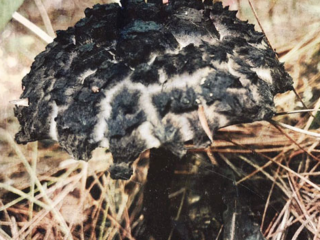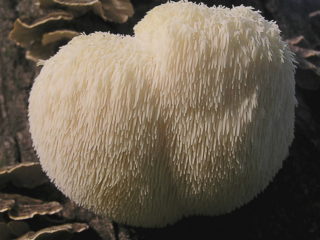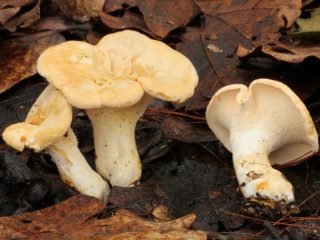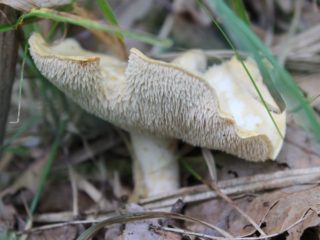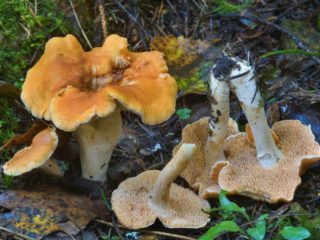Content
The white-legged or smooth hedgehog is known in mycological reference books as Sarcodon leucopus. The name has several synonyms:
- Hydnum occidentale;
- Hydnum colossum;
- Hydnum leucopus;
- Fungus atrospinosus.
Species from the Banker family, genus Sarcodon.
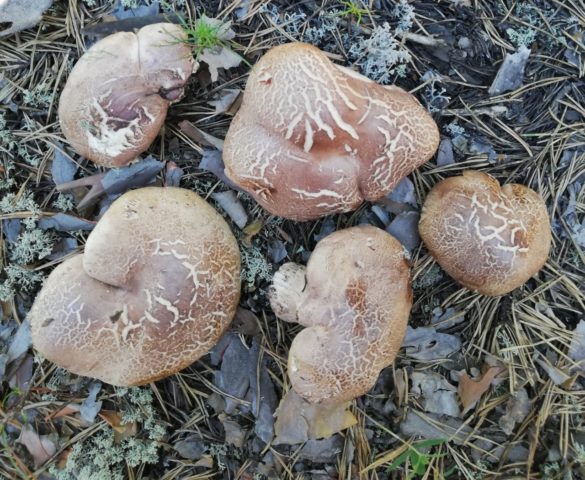
The color of the fruiting bodies is not uniform; white-legged hedgehogs of the same shape and color are not found
What does a white-legged hedgehog look like?
The mushrooms are large, squat, consisting of a wide cap and a disproportionately short thick stem. Hymenophore type spinous. The color of the fruiting body is white at the bottom, light or dark brown with brownish-lilac areas at the top.
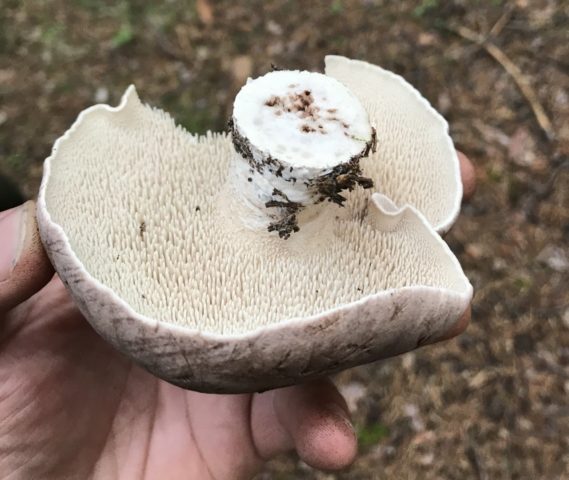
The spines are wide, reaching a diameter of up to 1 mm
Description of the cap
The mushrooms are arranged tightly, so the cap is often irregularly deformed in shape. At the beginning of the growing season it is convex with concave edges, over time it becomes prostrate and takes on various shapes. The edges are wavy or straight.
External characteristics:
- the diameter in adult specimens reaches up to 20 cm;
- the surface of young fruits is smooth with a fine edge, velvety;
- the central part has a slight depression, the color is darker than at the edges;
- the protective film is dry, in adult mushrooms it often has chaotically located wide and narrow cracks;
- areas finely scaly in the middle, smooth towards the edges;
- the spore-bearing layer is spinous, white at the beginning of the growing season, consists of large, up to 1.5 mm long, sparsely spaced cone-shaped spines;
- hymenophore descending, near the stalk with smaller and shorter spines;
- in adult specimens, the lower part of the cap is brown with a lilac tint.
The pulp is thick, dense, creamy or with a pinkish tint. When cut, the color changes to gray; in overripe specimens it may be greenish.
A pungent aroma is present in both young and overripe dried smooth hedgehogs.
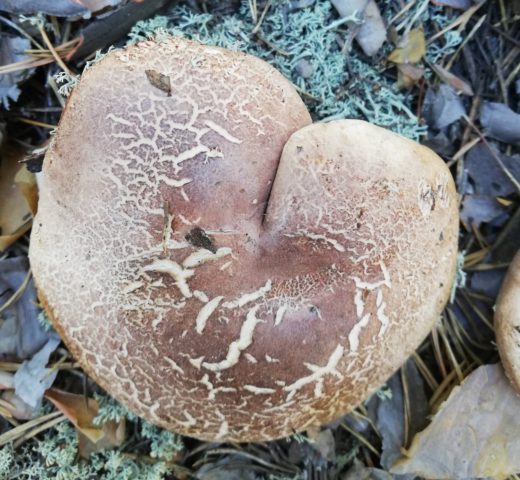
At the rupture sites, the flesh is white or slightly grayish
Description of the leg
The location of the leg is eccentric, less often central. The shape is cylindrical, wider in the middle. Diameter – 3-4 cm, length – up to 8 cm. The structure is dense, the inner part is solid. The surface is finely scaly on top, fleecy at the base. White filaments of mycelium are visible on the surface near the ground.The color of the leg of young hedgehogs is white, while that of older ones is light brown at the bottom with greenish areas.
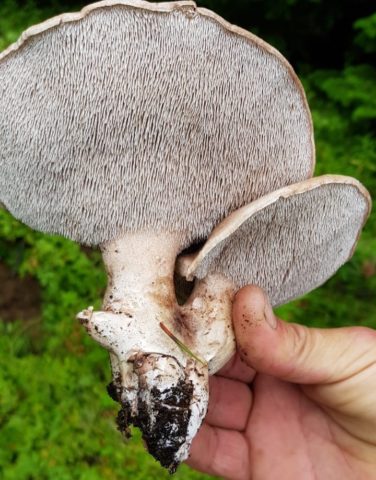
The legs near the substrate of several mushrooms may be fused
Where and how does it grow
The white-legged hedgehog is distributed throughout Russia, where there is a cluster of coniferous trees. The main distribution area is Western Siberia. Less commonly, the species is found in the Urals and southern regions. Autumn fruiting occurs from August to October. White-legged hedgehog grows in compact small groups or singly on a substrate, coniferous litter near pines and spruces.
Is the mushroom edible or not?
There is no information on the toxicity of white-legged hedgehog. The taste of the fruiting bodies is bitter or pungent. Bitterness is present even after heat treatment. In mycological reference books, the species is listed in the category of inedible mushrooms.
Doubles and their differences
Externally, the rough hedgehog is similar to the smooth hedgehog. It is distinguished by the dark brown color of the surface of the cap with large, pressed scales. The taste of the species is bitter, the smell is weak. A double from the group of inedible mushrooms.
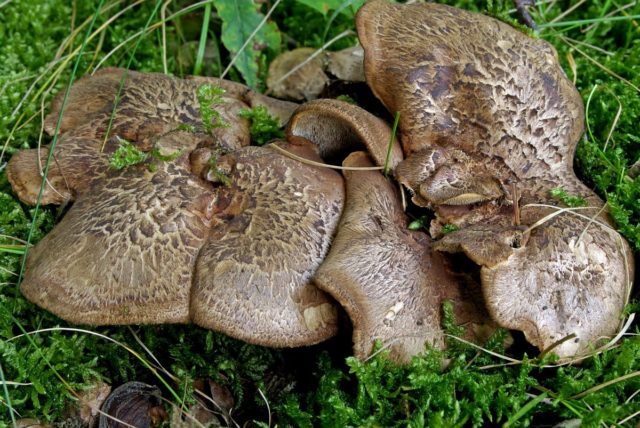
In the center the scaly covering is larger and darker
Conclusion
White-legged hedgehog is a mushroom that grows close to conifers. It is distinguished by autumn fruiting. A special feature is a sharp unpleasant odor and bitter taste. Apparently because of these features, the white-legged hedgehog is included in the group of inedible species.

